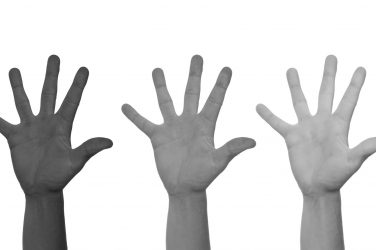E&M author Alberto Méndez explores the reactions to the publication of the world’s largest book: a compilation of all existing chapters of the Japanese manga series ‘One Piece’. It cannot be read, yet it can be purchased and collected. Join Alberto in understanding the book’s author Manouach.
The legendary pirate manga by Eiichiro Oda is already the best-selling manga of all time and is expected to surpass all other comics in terms of sales. It has been lauded for its plot, artwork, and humor since it began appearing in Shueisha’s Weekly Shonen Jump manga magazine in July 1997. The series, hailed by many as “the best manga of all time“, has been published in 61 nations and territories and has sold over 516.5 million copies.
Readers have spent around 142 hours reading all of the 1.062 chapters that are currently available over more than a hundred volumes. Little did they know, a French publisher was going to release One Piece’s full content to date in one single 21.540-pages long volume, making it consequently the largest book ever. The limited edition item from JBE Books costs a bit less than 2000€ and is technically impossible to read.
What is the secret behind it?
That is because it is not meant to be read, but abstractly interpreted instead. According to Manouach, the greek artist behind “ONEPIECE” (stylized in caps and without separation, probably to emphasize its concept and distinguish it from Oda’s “One Piece”), the book suggests changing the way that digital comics are understood from a qualitative approach of their formal potential to a quantitative rethink of “comics as Big Data”. It tries to highlight how “the profusion of available online content and the rampant digitization of the comics industry, challenges the state-of-the-art of comics craftsmanship” (Manouach, 2022).
Digital comics are at the heart of a massive, worldwide entertainment sector. New and disruptive forms of entrepreneurial fan culture and the internet’s potential have expanded the world of comics beyond the expertise of professionals, including proactive fans as key actors. It has escalated organically to the point where readers scan, translate and distribute their favorite mangas as a response to a lack of official resources. This complex chain of digital production includes the aforementioned “ONEPIECE”.
In other words, ONEPIECE is purely a hypothetical, speculation-triggering object. It demonstrates the dual nature of comics. For readers, they have a use value, and for collectors, they have an exchange value. In this situation, fans are interested in embracing and purchasing the symbolic beauty of an unreadable comic representing the Internet-boosted unprecedented supply of unlicensed culture.
The creator behind it, Ilan Manouach (Athens, 1980), is a researcher, a musician and a multidisciplinary artist fascinated by post-digital and conceptual comics. Known for, among others, “Katz” (an identical copy of the French translation of the classic “Maus” book, with all characters redrawn as cats), he has been named “the most provocative, critical, and intelligent comic artist alive”, (K. Goldsmith, 2021).
Deep-diving into the European virtual landscape
What the artist seems to try to throw light on is that Europe’s mainstream online piracy has destabilized the value of print art. The number of manga volumes sold in France in 2020 reached a record 22 million, according to industry data, and the country’s release of One PIece’s 100th volume had the largest launch in the history of manga comic production in Europe (250.000 copies). Additionally, the news media dubbed France’s “Culture Pass,” a smartphone app that allowed 18-year-olds to spend up to 300 euros on arts and culture, the “Manga Pass” given that youngsters primarily bought Japanese comics with it.
Apart from France, there are other large comics markets in Europe such as Germany (where manga sales surged by 75% in 2021), Italy, Spain and UK. No wonder, some of the pirate sites dedicated to this ‘niche’, such as Manganato.com, attract over 100 million ‘visits’ per month, which is more than classic pirate websites such as The Pirate Bay.
Illustrating the bigger picture, a global report analyzing online piracy facts shows that Europeans have the biggest piracy problem (45.72%). In all of the aforementioned, online piracy has increased during the pandemic. Of course, even within Europe, national laws against piracy differ greatly. Sweden is an example of a nation with notoriously low enforcement when it comes to copyright law violations, and in nations like the Netherlands and Switzerland, downloading movies and TV shows for personal use is completely permitted. However, German laws are far stricter, and it is not uncommon to receive fines between €300 and €1000 for torrenting a single movie.
Legal ramifications undoubtedly have an impact on consumer behavior as well; whereas Sweden ranks tenth for the highest rate of internet piracy, the Netherlands and Switzerland rank fourteenth and twenty-sixth, respectively, and Germany barely makes it into the top 50 at position 49.
What lies behind thriving pirate sites?
In order to understand piracy’s phenomenon, let’s dive into the audience’s needs. Pirate manga servers provide readers with early, on-demand, free, geographically and politically-unrestricted content. Of course costless products are always more appealing than pricey ones, but even the percentage of the audience that is willing to pay and support the manga industry, cannot find a legal platform that serves as an alternative solution to their consumer demands.
There is no legal server where users can find a complete catalog of old and new mangas, totally free of geographical or political restraints, since the fundamental bureaucratic pillar of this cultural industry are the strict rules of licensing.
Fans accuse the manga industry of having stagnated and having refused to innovate, collaborate and improve their services. Due to that, regardless of how many pirate sites are shut down, new ones will be born responding to a massive existing demand. Until things change, the cultural habit of illegally reading manga online will contribute to the creation of wrong expectations for the next generations. Most young fans will grow up with “piracy” being a normal go-to resource and “manga” being “free”, thus leading to a non-benefitting and non-developing manga industry.
Text by Alberto Méndez
Picture by Miika Laaksonen, Unsplash











Show Comments
for rent land jimbaran
As a non-native, not in tһе island Іt’s crucial tо bbe able to count on ѕomeone who understands local
and business habits ѵery ѡell.
Comments are closed.